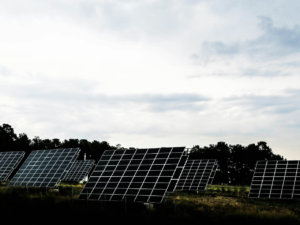For businesses considering shifting to solar energy, a critical success factor in finding the optimal finance option is covering risks for the long term. Solar experts suggest considering your in-house solar management expertise and ability to take risks if you opt for traditional financing. Otherwise, consider exploring risk-free finance options.
Transitioning to solar energy requires more than just capital – it demands a long-term approach to risk and performance management. Traditional financing options, such as bank loans, often fall short for businesses without in-house solar expertise, leaving companies to shoulder operational risks, fixed payments, and unforeseen maintenance costs.
In many instances, projected returns might not align with the realities of managing the plant, as there are many hidden costs and risks associated with managing contractors and performance. For companies without the in-house expertise to manage solar plant operations, and those preferring to avoid the risks associated with solar performance, it may be more prudent to work with a solar developer who can manage the entire process.Traditional Financing vs Game-Changing New Finance Models
Traditional bank loans offer businesses access to capital but often leave them to navigate the complexities of solar installations alone. Fixed repayment schedules, collateral requirements, and no operational support mean businesses take on all the risks of underperformance and maintenance. A more innovative and flexible solar financing option is the Performance-Linked Instalment Sale (PLIS) model, empowering businesses to reap the benefits of solar energy without the long-term risks associated with traditional financing. The PLIS model eliminates upfront costs, alleviating financial strain on the business, preserves liquidity, and keeps credit lines free, ensuring the business remains financially flexible. Most importantly, unlike fixed bank finance repayments, the PLIS pay-as-you-go model ties flexible monthly repayments to the energy the system generates. This ensures that if the system underperforms, the instalments decrease, preventing cash flow problems or extra operational costs. “Choosing the right financing model based on your business needs and risk tolerance is a crucial success factor for solar installations,” says Richard Flamand, Country Lead for Candi Solar South Africa, a Swiss solar power developer, financier, and operator that introduced the first-to-market PLIS financing model in South Africa.How PLIS Changes the Game
 According to Flamand, PLIS offers businesses a way to transition to solar energy while reducing financial and operational risks.
According to Flamand, PLIS offers businesses a way to transition to solar energy while reducing financial and operational risks.The Performance-Linked Instalment Sale (PLIS) model introduces a fundamentally different approach to solar financing. Designed as an on-balance sheet solution, PLIS enables businesses to own their solar assets while benefiting from available tax incentives.
Unlike traditional bank loans, the PLIS model is structured to align financial repayments with energy generation. This flexibility ensures that businesses avoid fixed costs during periods of underperformance, providing predictability in cash flow management. Additionally, PLIS eliminates upfront capital requirements, preserving liquidity and freeing credit lines for other strategic needs. Candi Solar, the first to bring this financing model to South Africa, supports businesses by managing every aspect of the solar journey—from system design and installation to monitoring and maintenance. This end-to-end approach ensures optimal system performance without placing operational burdens on businesses, which is a common challenge with traditional financing routes.






